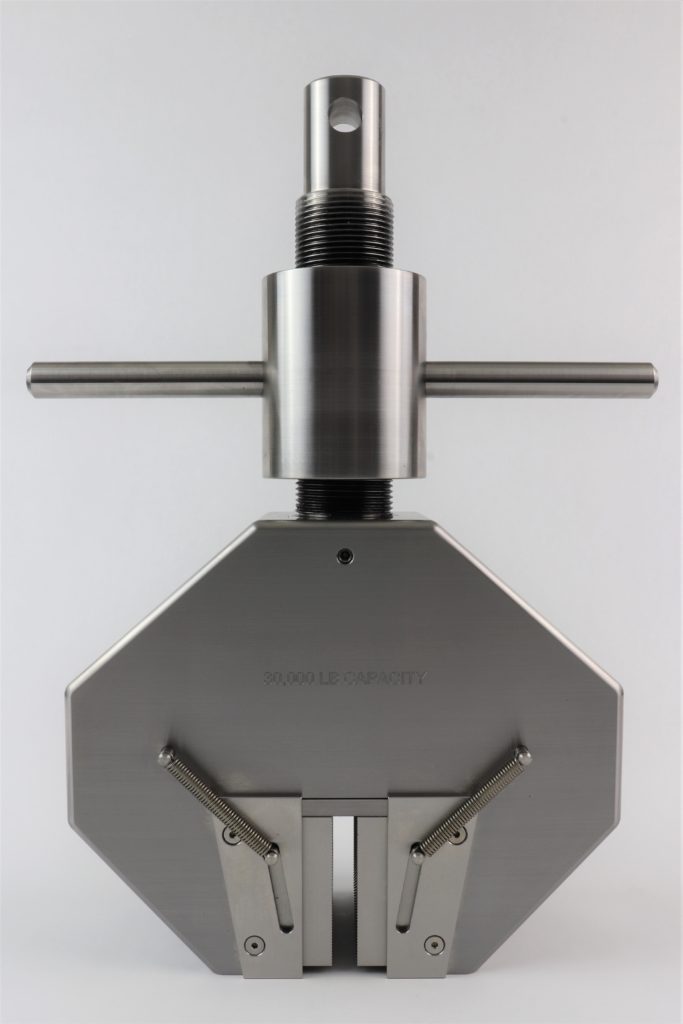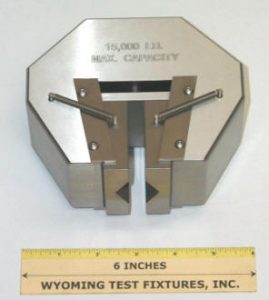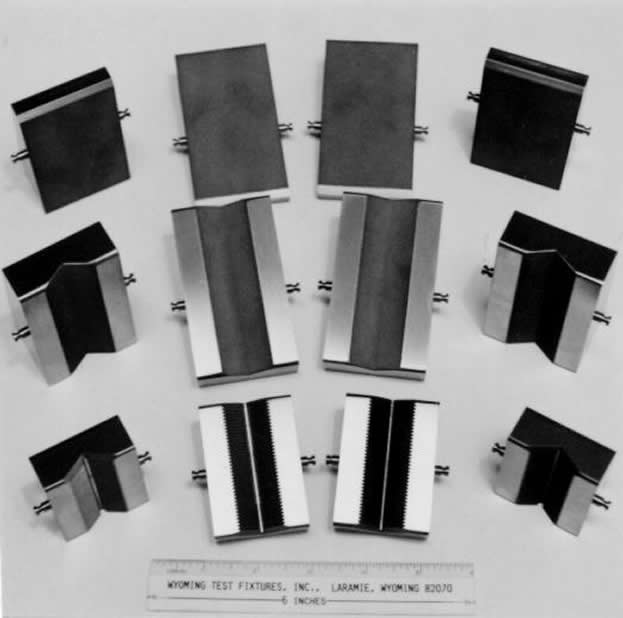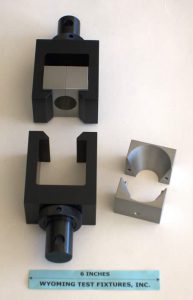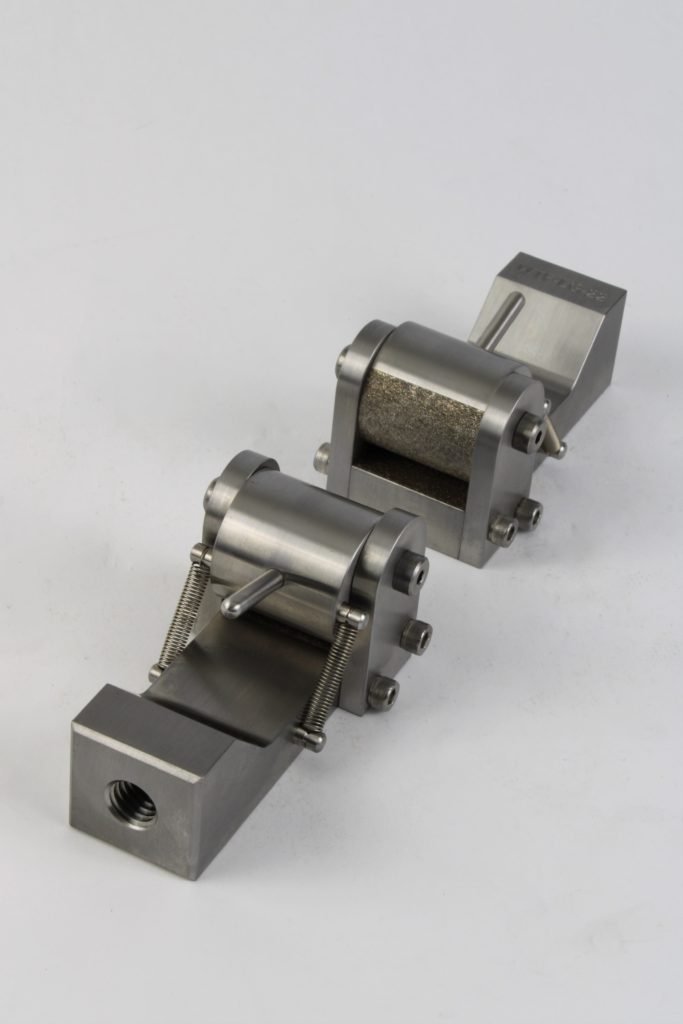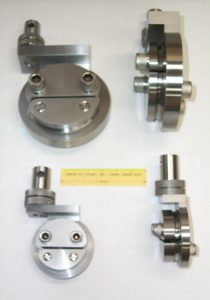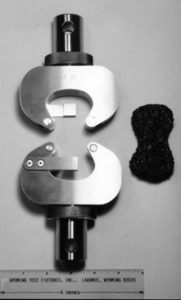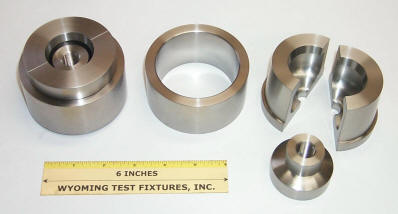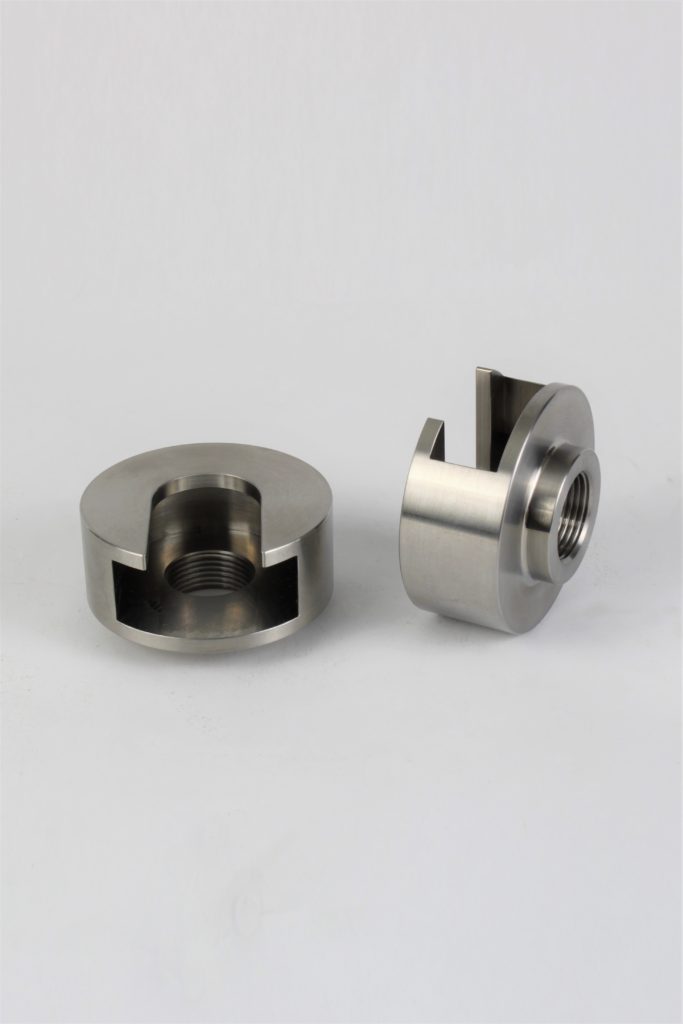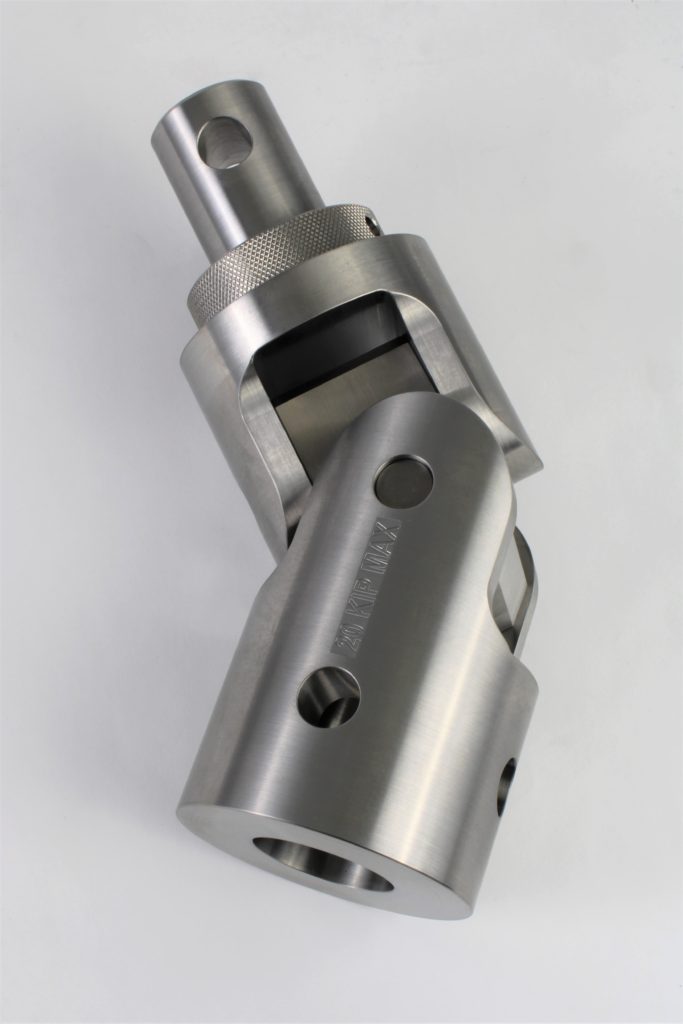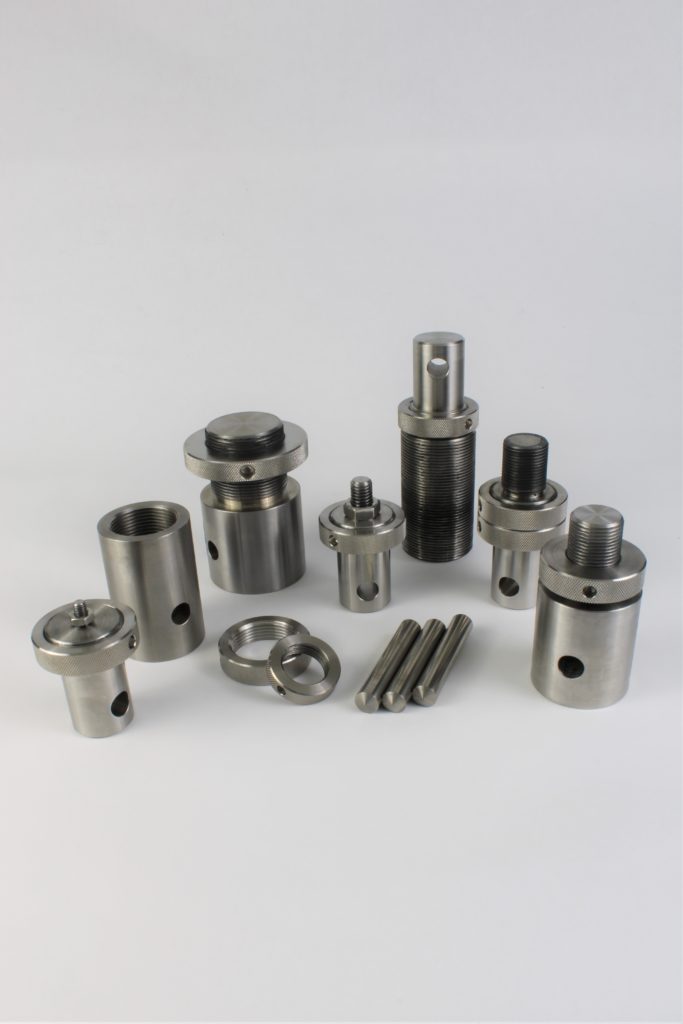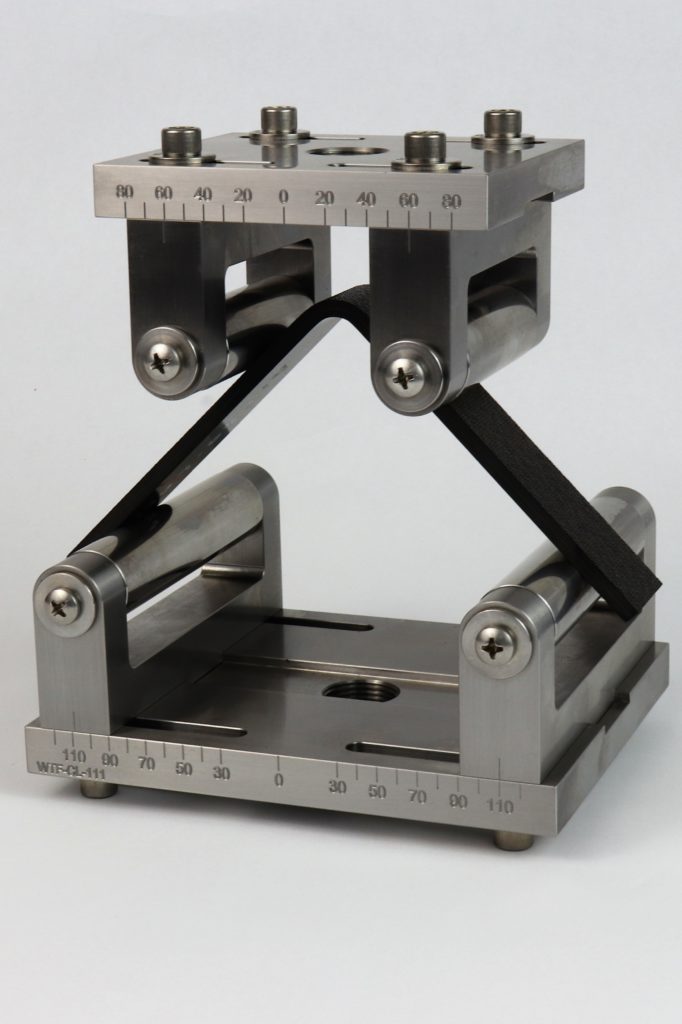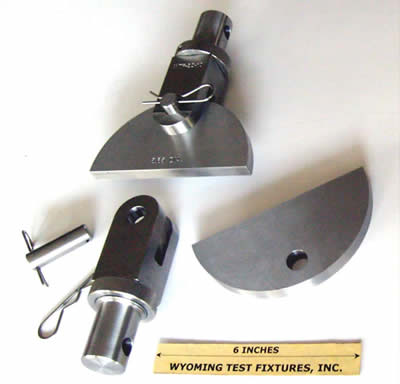Tension Test Fixtures
Among the most commonly performed type of mechanical test, tension testing may at first appear to be among the most simple to perform. However, a variety of tensile wedge grips have been developed for use with a variety of material types. Similarly, a variety of gripping surfaces are available for use with different materials. Commonly used types of tensile grips are listed in this section, along with tension testing accessories.
Standard Tension Fixtures and Accessories
When tightening the grips, the Standard Wedge Grip body moves while the wedges remain stationary. Thus accidental compressive loading and specimen damage is eliminated during specimen installation. Standard Wedge Grips are available in a variety of widths and load capacities.
In contrast to Standard Wedge Grips, the Simple Wedge Grip body remains stationary when tightening the grip and the wedges move outward. Disconnecting the lower grip from the testing machine can avoid putting the specimen into compression while engaging the upper grip. Standard Wedge Grips are shorter, an advantage when vertical space is limited.
Wedge grip inserts of all types and in all sizes and load capacities can be provided to fit all existing wedge grip bodies, including custom designs for special applications. While machined serration grip faces, both straight- and cross-serrated, are popular, grip faces coated with tungsten carbide particles are also being used more extensively.
A wide range of tensile grips have been custom-designed and fabricated for customers over the years, for use in testing a wide variety of materials under various environmental conditions. Most do not utilize mechanical wedges, although some do.
E-5:Line Grips for Thin Sheeting
ASTM C882
Thin sheet materials, typically plastic or metal film or sheeting up to 0.040" thick, are held in place via line contact with a tungsten carbide particle coated eccentric cylinder. Standard grips accommodate a 1" wide specimen.
Capstan grips use friction to avoid premature failures and stress concentrations when testing cordage, rope, flat strapping and similar flexible materials.
E-7:Briquet Tensile Testing Grips
ASTM C307
The tensile strength of specially-shaped briquets of mortar, grout, and similar other monolithic surfacing materials is tested using identical upper and lower grips, termed clips.
E-8:Split Collar Tensile Grips
ASTM F519
Split collar grips are typically used to tensile test round bar specimens having enlarged ends and reduced central cross sections. Candidate specimen materials include, in particular, brittle metals and ceramics.
E-9:Adhesive Bond Tensile Grips
ASTM D897
ASTM Standard D897 was originally developed for the determination of the tensile properties of metal-to-metal adhesive bonds, but has now been extended to other adherents including composite materials.
Universal joints are commonly used in tensile loading applications to aid in maintaining axial load alignment. Universal joints of any end attachment configuration, load capacity, and length can be designed and fabricated.
Adapters, lock rings, and pins of any configuration, to adapt test fixtures to any type of mechanical or servohydraulic testing machine, can be provided at nominal cost. Many of the more common styles and sizes are kept in stock, available for immediate shipment.
Specialty Fixtures
F-3:Curved Beam Strength
ASTM D6415/ AITM1-0069
Used to determine the interlaminar tensile strength of a unidirectional composite, this method induces a bending moment in the curved specimen to induce tensile stress in the curved region.
F-4:Split Disk Tensile Test Fixture
ASTM D2290
ASTM Standard D2290 defines procedures for testing ring specimens. Procedure A tests reinforced-thermosetting resin pipe, Procedure B for thermoplastic pipe of any size, and Procedure C for thermoplastic pipe with nominal diameters of 4.5” and greater.

